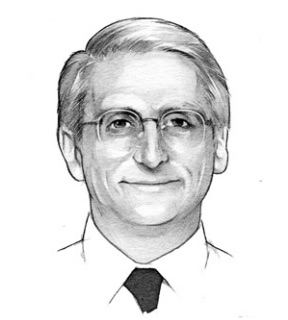Defining the Professional & Navigating Market Realities (2001-2004)
The early 2000s saw a significant period of introspection and redefinition within the technology sector, likely in the wake of market adjustments. The discourse heavily focused on identity: "Who Are We?" and "The Core of the Third-Wave Professional" from 2001 highlight a concerted effort to understand and solidify the role of IT professionals. This was accompanied by discussions on industry shifts like "Crossing the Chasm" and foundational educational changes with "The IT schools movement." By 2002, a more sober tone emerged, with titles such as "Career redux" and "Flatlined," indicating a period of recovery and reassessment of past "Risks of linear thinking." As the years progressed, the focus shifted from immediate survival to establishing core principles, as seen in "Great principles of computing" (2003), and acknowledging the human and social dimensions of technological progress, exemplified by "The social life of innovation" (2004). There was also a nascent awareness of AI's limitations, hinted at by "Artificial stupidity" in 2004.
The Networked World & Computing as Science (2005-2008)
Mid-decade, the conversation expanded significantly to grapple with the burgeoning complexity of interconnected systems and the fundamental nature of computing itself. A key theme was the recurring question, "Is computer science science?" (2005), which evolved into a more definitive assertion, "Computing is a natural science" (2007). Parallel to this identity quest, the practical challenges of "Decision making in very large networks" and the rapid formation of "Hastily formed networks" (both 2006) became central, alongside the pervasive problem of "Infoglut." The period also saw an emphasis on collaborative approaches, as suggested by "Getting to 'we'" (2008), and a recognition of historical patterns, with "Déjà vu all over again" from the same year, perhaps suggesting a cyclical nature to technological challenges and solutions.
Deepening Professional Craft & Human Factors (2009-2013)
Entering the 2010s, there was a concentrated effort to refine the very definition and methodologies of the IT profession. A series of articles under "The profession of IT" in 2009 rigorously explored topics like "Computing's paradigm" and debated "Is software engineering engineering?" This period marked a deeper dive into professional self-identity. Beyond these foundational questions, practical technical concerns also gained prominence, such as "The resurgence of parallelism" (2010) and the ongoing "long quest for universal information access." A notable shift emerged towards personal efficacy and cognitive aspects of work. Titles like "Managing time" (2011) underscored the importance of practical skills, while discussions around "Moods," the challenges of "predicting the future" (2012), and the application of "Design thinking" (2013) highlighted a growing awareness of human psychology and creativity in problem-solving within the tech domain.
Navigating Accelerating Change & Learning to Innovate (2014-2017)
This period strongly emphasized the need for professionals to adapt to a rapidly evolving technological landscape and to actively cultivate innovation. The metaphor of "Avalanches are coming" and the challenge of "'Surfing toward the future'" (both 2014) vividly portrayed the imperative for continuous learning, captured by "Learning for the new digital age." Innovation itself became a subject of scrutiny, with articles questioning "Why our theories of innovation fail us" while simultaneously exploring "How to produce innovations" (2015, 2016). There was also a focus on foundational skills, seen in titles like "Learning to learn" and "Software quality" (both 2016), and a self-reflective look at the core principles of the field, addressing "Misconceptions about computer science" and the impact of "Exponential laws of computing growth" (both 2017).
The Rise of AI & Resilience in Uncertainty (2018-2021)
As the decade drew to a close and entered the 2020s, Artificial Intelligence emerged as a dominant theme, significantly shaping the professional discourse. The journey began with "Learning machine learning" (2018) and swiftly moved to confronting the "Dilemmas of artificial intelligence" (2020). This era was characterized by an acute awareness of "accelerating technology change" and pervasive "Uncertainty" (2018, 2019), leading to a strong emphasis on resilience and cybersecurity, often conveyed through insightful interviews with experts. The "Avalanches" metaphor reappeared in 2020, but this time linked to the idea that they "make us all innovators." Amidst these rapid changes, there was a renewed focus on fundamental cognitive tools, as seen in "Computational thinking for professionals" and the value of "Back of the envelope" thinking (both 2021), reinforcing the idea that core skills remain crucial.
Deep Dive into AI's Core & Future Implications (2022-2025)
The most recent period is overwhelmingly dominated by an in-depth exploration of Artificial Intelligence, moving beyond general dilemmas to specific technical and societal nuances. Articles like "The context problem in artificial intelligence" (2022) and "The Smallness of Large Language Models" (2023) delve into the technical challenges and limitations of cutting-edge AI. Ethical considerations also take center stage, exemplified by "Can Generative AI Bots Be Trusted?" (2023). Looking forward, the discussion continues to evolve around AI's mechanisms, with "An AI Learning Hierarchy" and the profound question "Can Machines Be in Language?" (both 2024). The very latest title, "Abstractions" (2025), suggests a forward-looking trend towards understanding the foundational concepts necessary to manage and comprehend the increasingly complex, AI-driven technological landscape, building on earlier discussions of "Systems abstractions" (2022).






